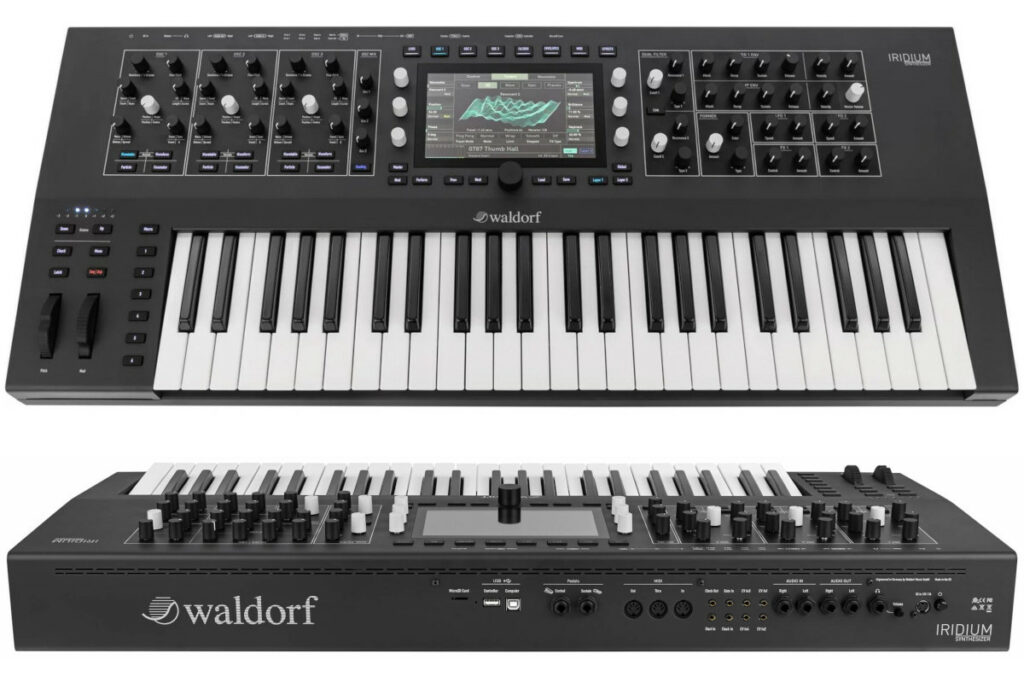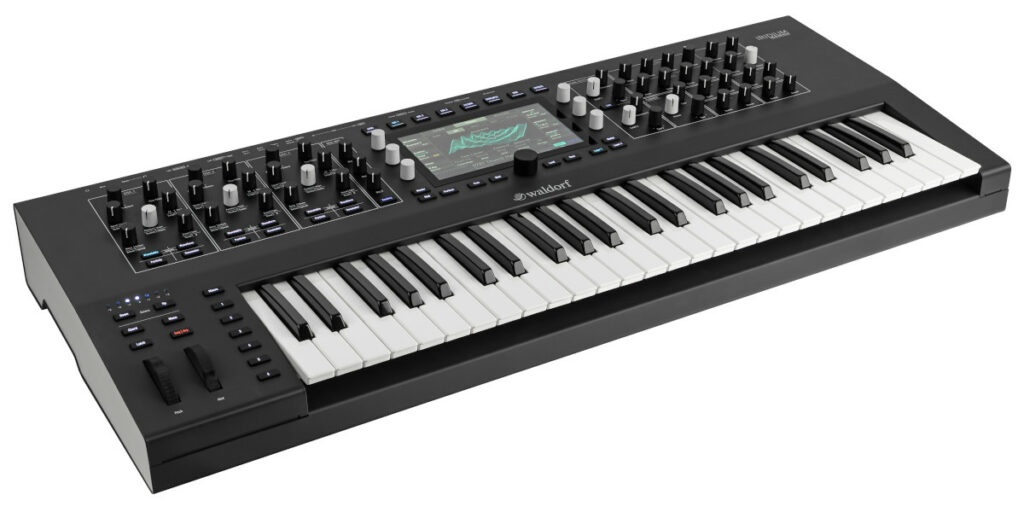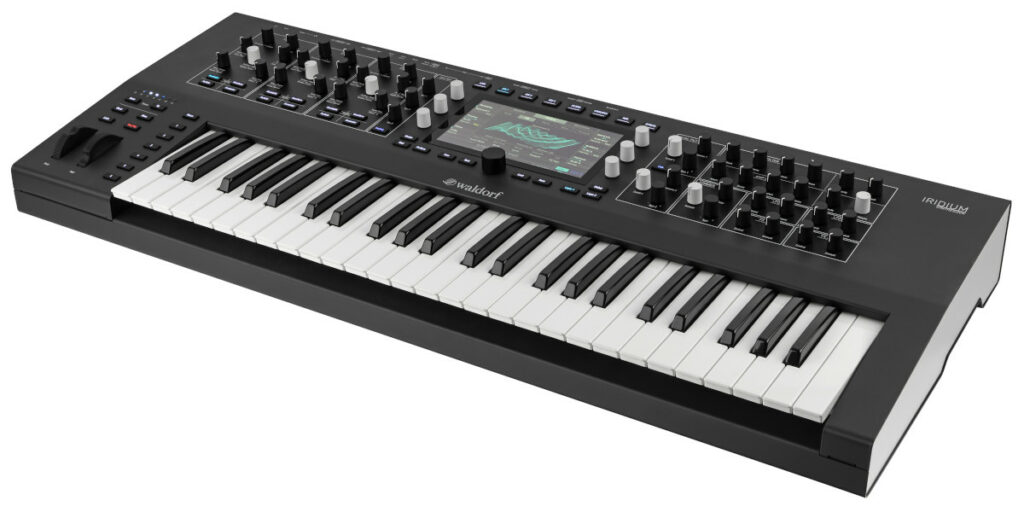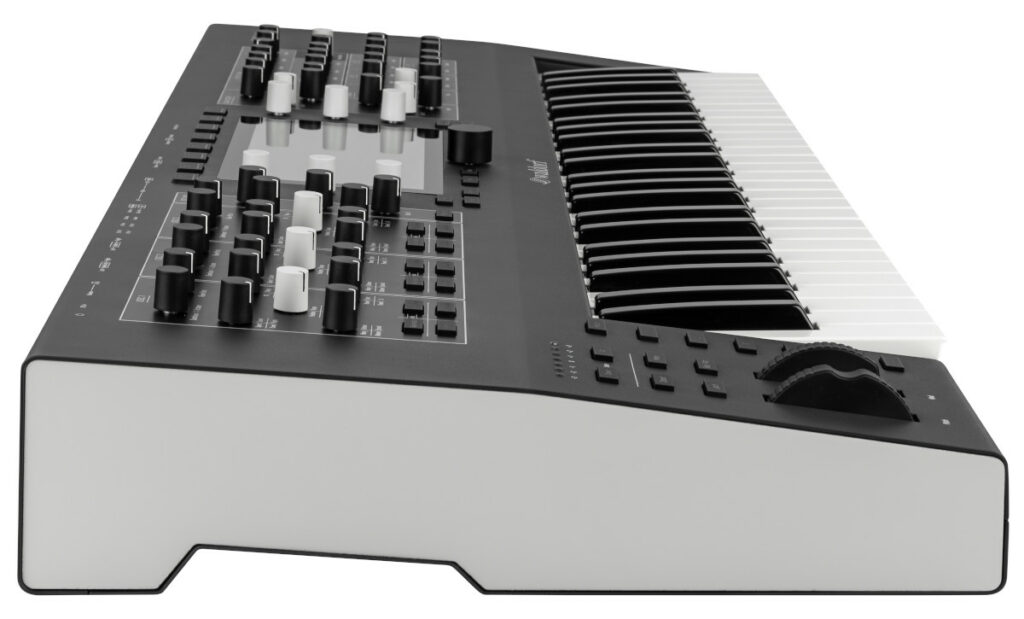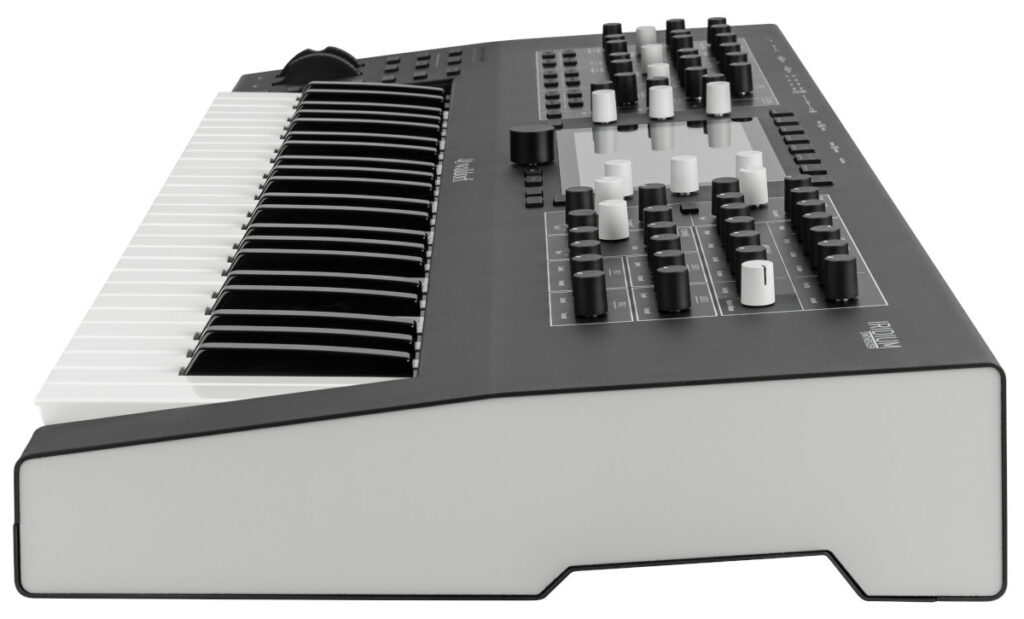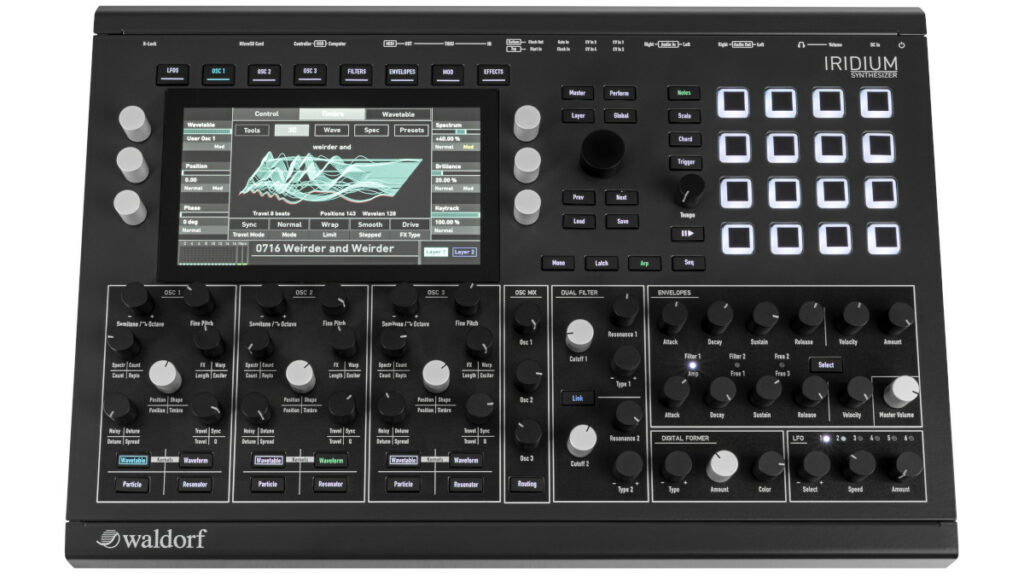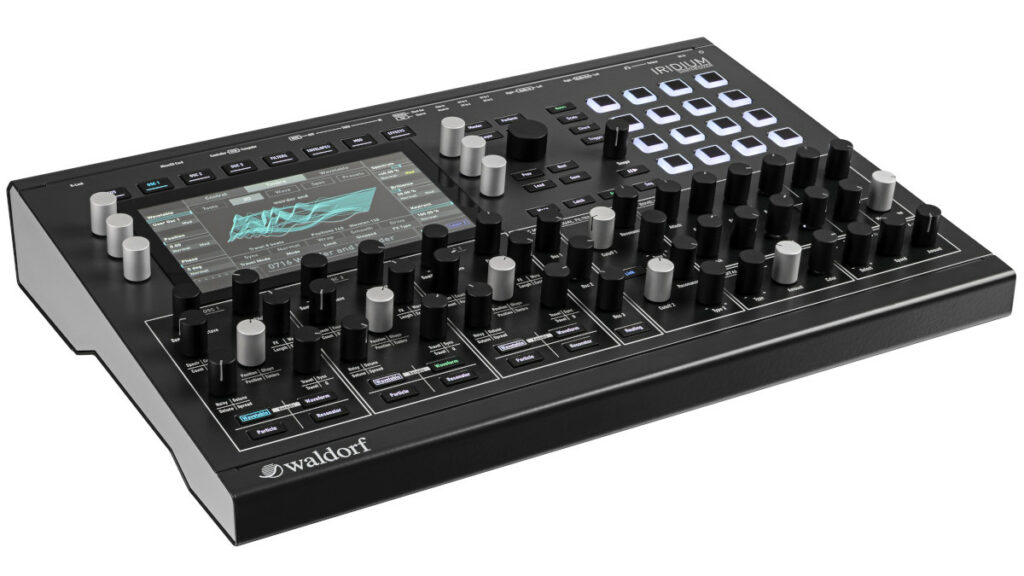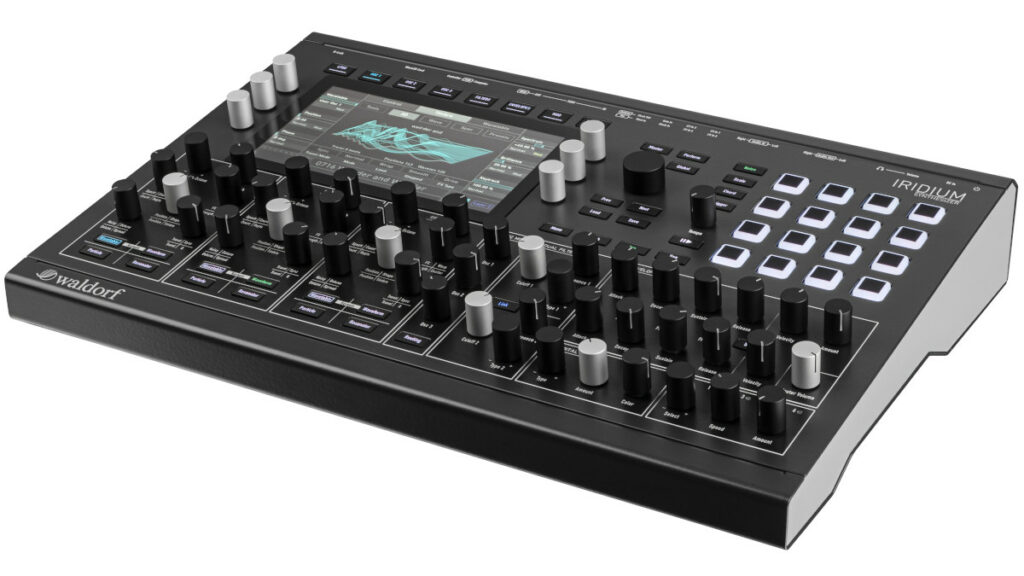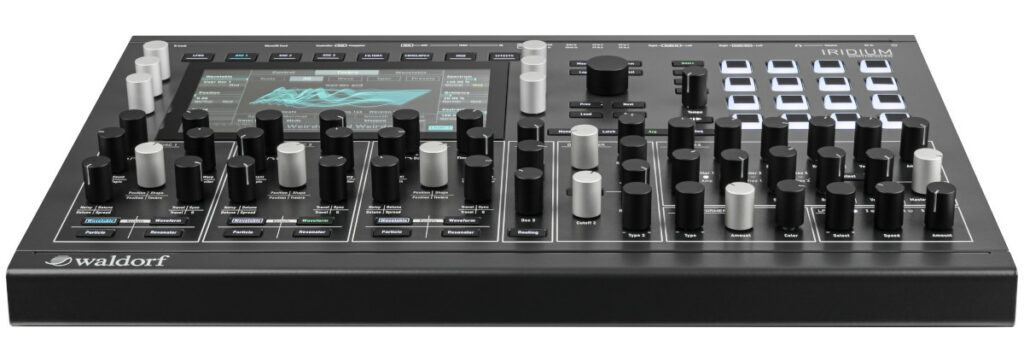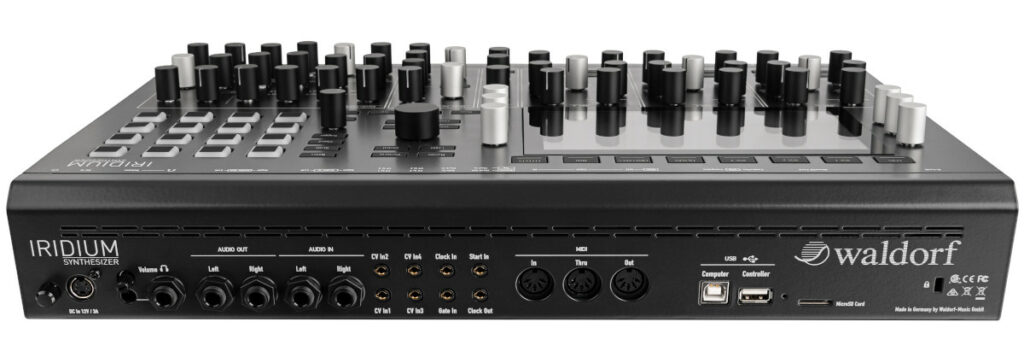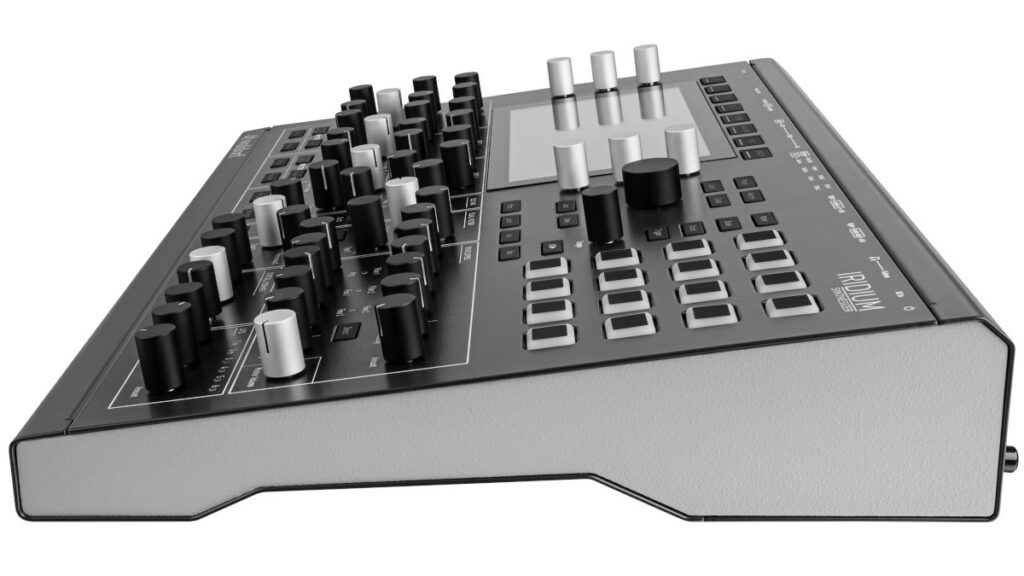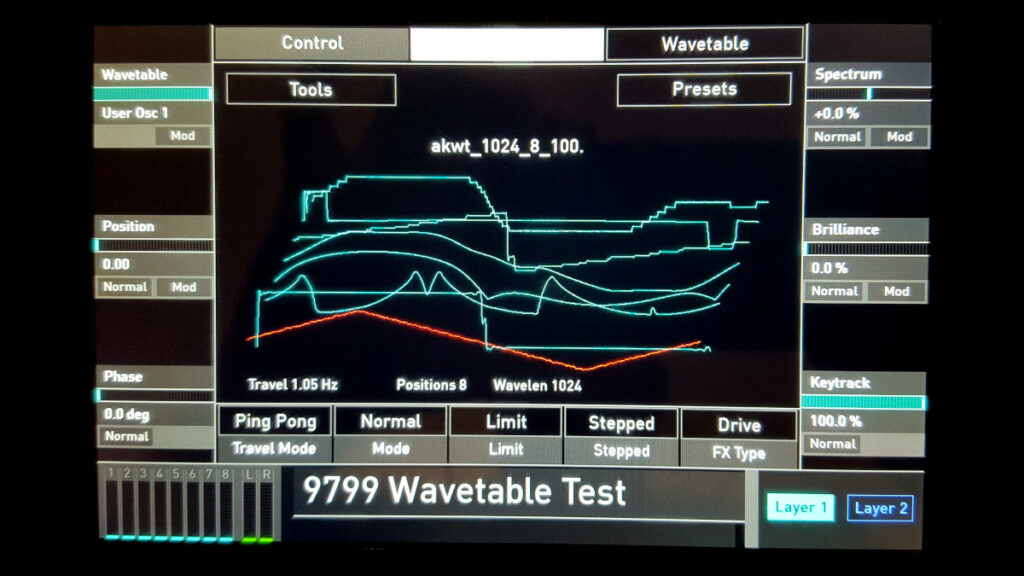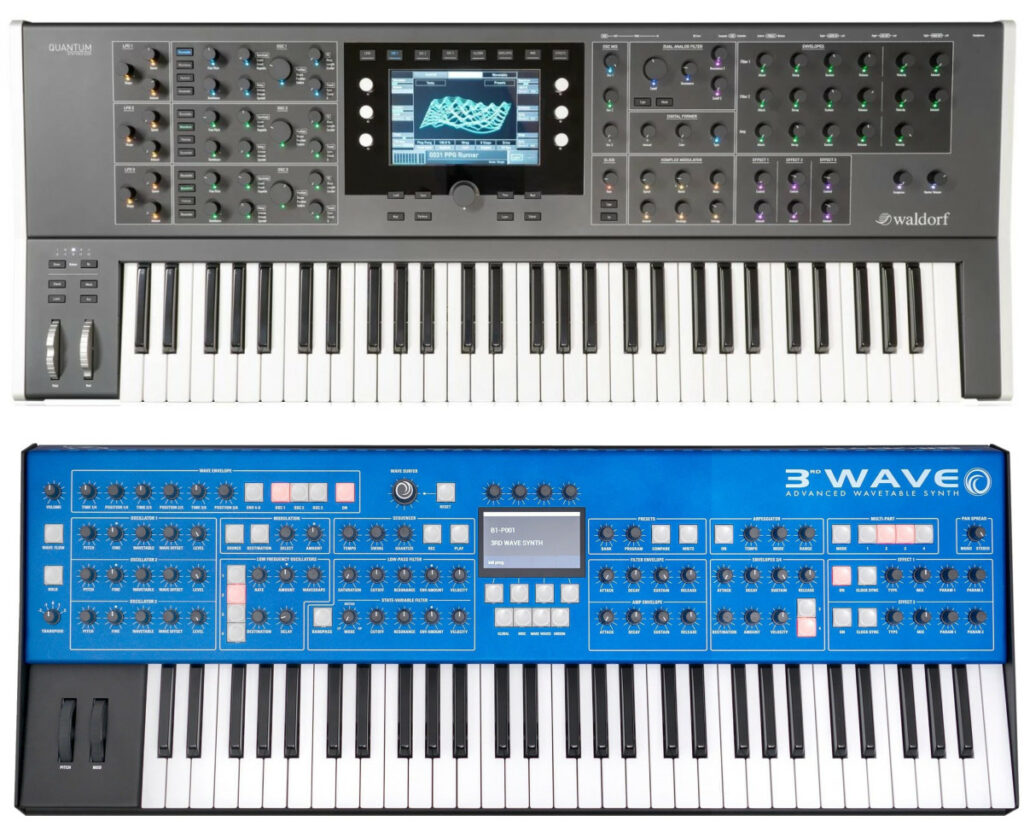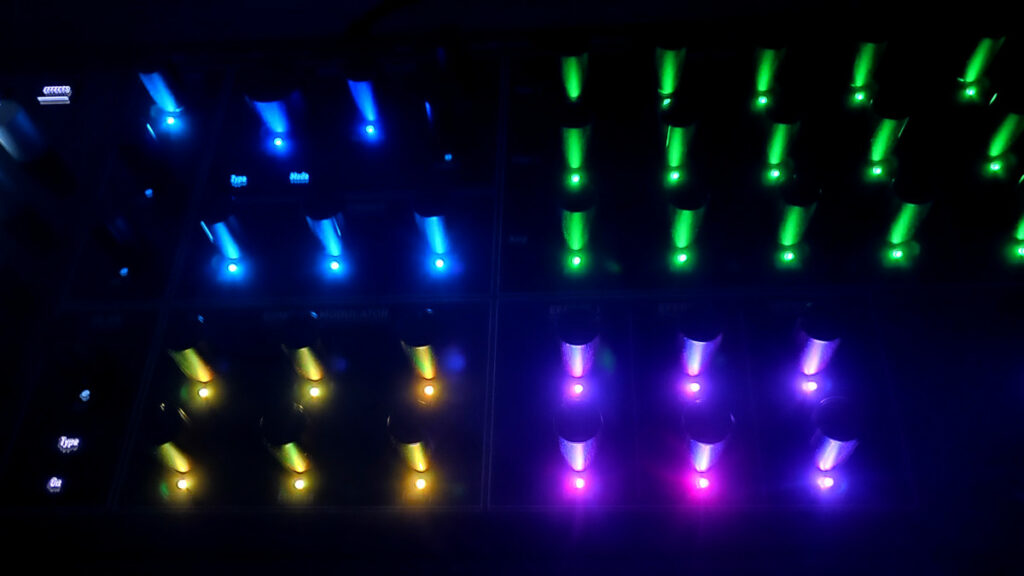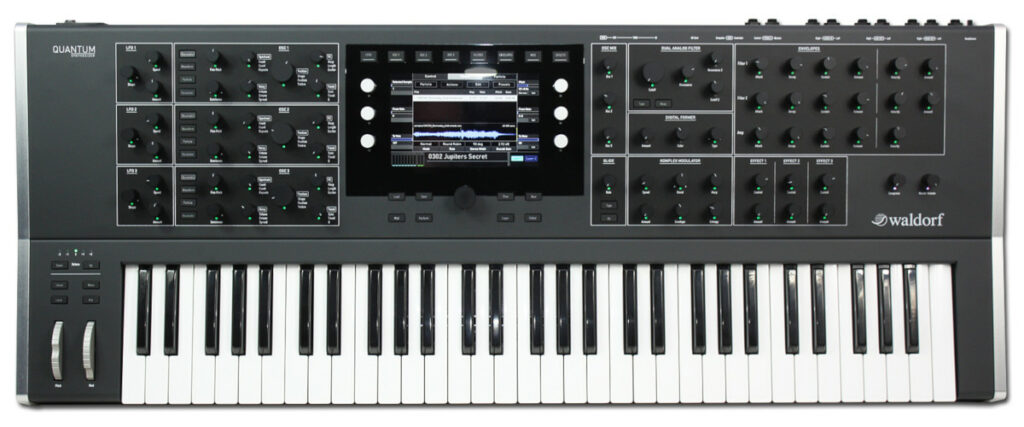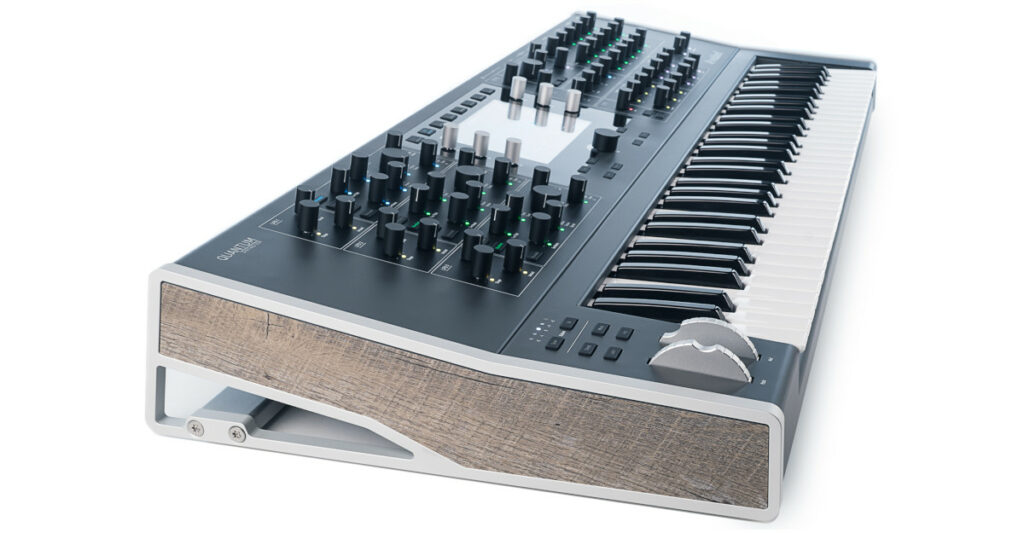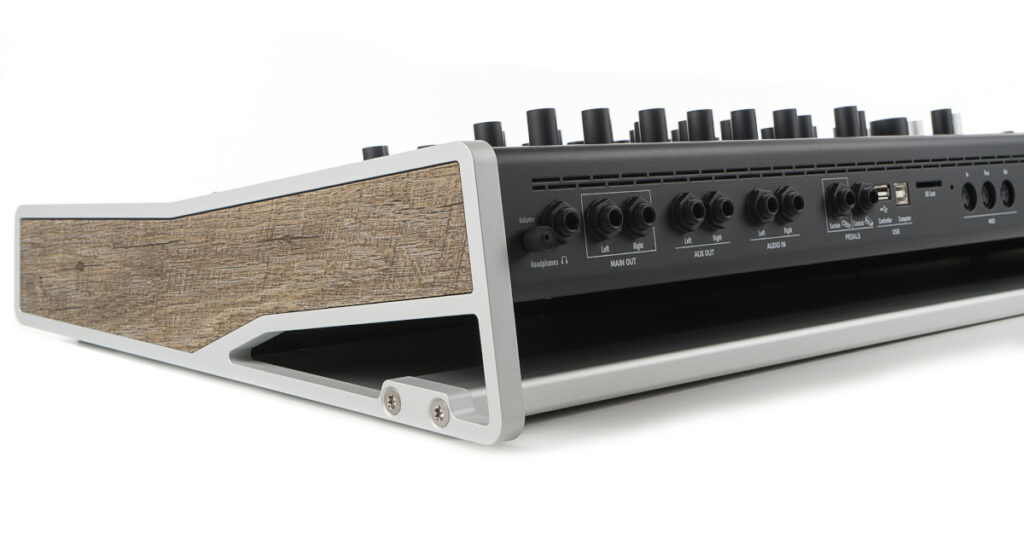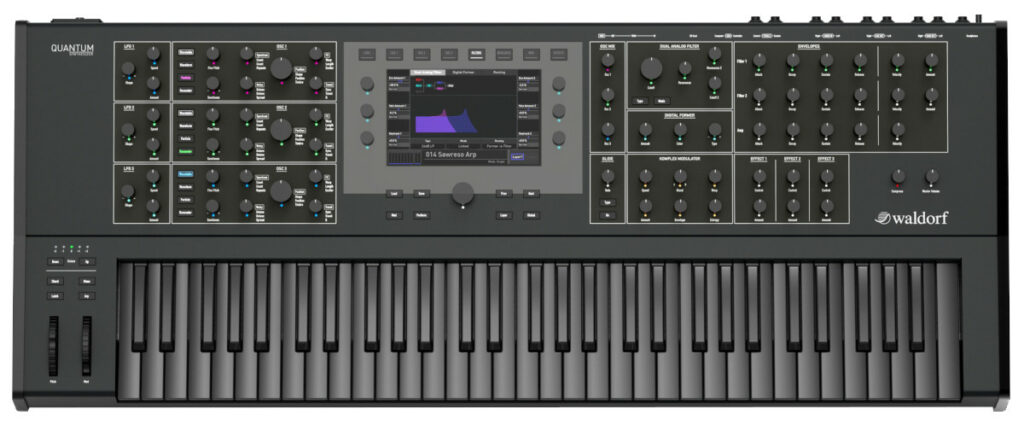Sequential Prophet X or Waldorf Quantum?
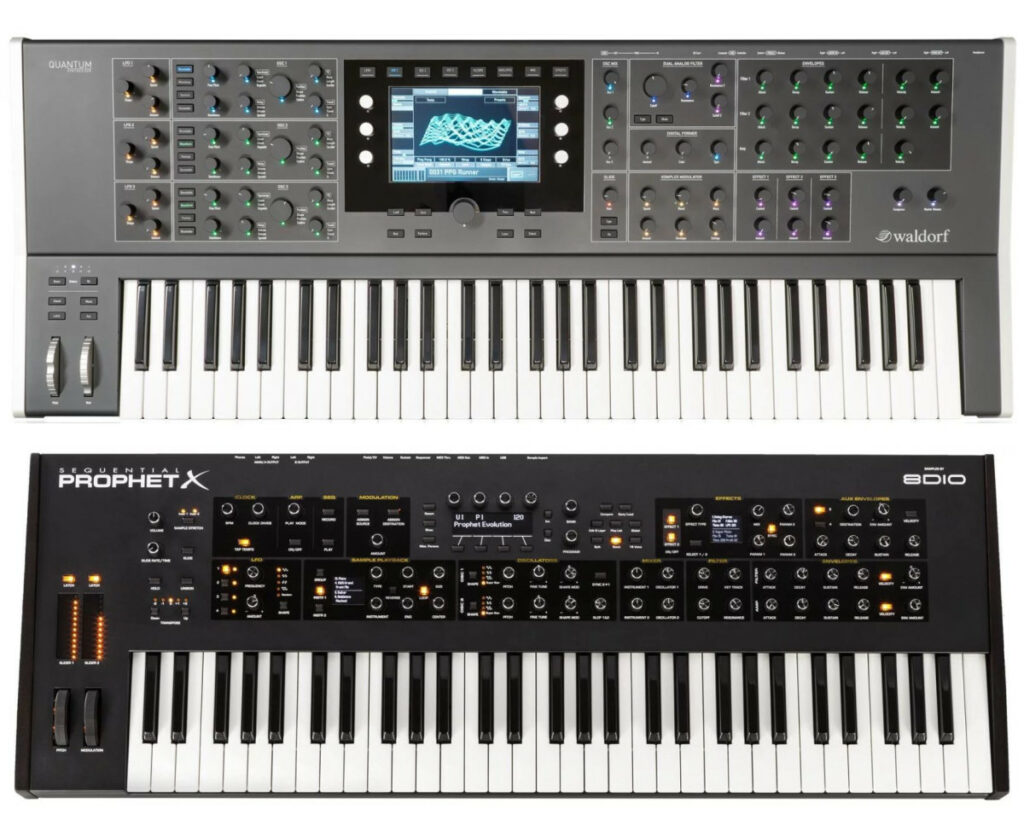
Which high-end polyphonic synth would you choose?
Often I have heard users in the Sequential Prophet X/XL or the Waldorf Quantum Synthesizer Facebook groups ask the question “Which is better, the Sequential Prophet X/XL or the Waldorf Quantum?”
FYI throughout this document most references to the 61 key Prophet X model or PX also apply to the 76 key Prophet XL model, with the exceptions of dimensions, weight and number of keys.
That question is one I seriously asked myself at the very end of 2018, intending to buy only one of them. Within a few months, I came to the conclusion I had to have both of them, which financially was impossible for me to do in 2019, so I bought one in 2019 and the other in 2020. Deciding which one to buy first was rough. In the end I decided to get the Quantum 1st and the Prophet X 2nd. With hindsight I can say they are equally desirable synths.
It is interesting that for this caliber of synthesizer, even in the less biased general synthesizer groups, these two synths are by far the two most commonly compared high-end hybrid polyphonic synthesizers. You also will very frequently see people that own both and with good reasons. Though equally desirable, they are vastly unique and different machines.
The question “Which is better?” is impossible to answer, both synths are a sound designers dream. Your needs may dictate one or the other or both though.
Do you need a synthesizer for studio or live performances?
From a physical perspective, the Quantum is big and heavy, the Prophet X a little smaller and lighter, however still substantial. Though not exactly to scale, the header image of the two synths above, is a very good guide of the sizes of each synth. The Quantum is 39.2 pounds and the Prophet X is 24 pounds (Prophet XL is 33.2 pounds).
In my opinion, the Quantum is more of a studio synth than a gigging or performance synth. Most of all, even OS 2.0 isn’t fully at performance stability yet. OS 2.0 is a huge improvement, wonderful, a joy, rather amazing, but it is still capable of an occasional loud digital pop/bang. A very minor nuisance in a studio synth but unacceptable for a gigging or performance synth. I’m not a live performance musician, so I’m happy and satisfied with the Quantum as a studio synth. If you are a live performance musician, you might find this colors your view.
The Prophet X is studio and stage ready in my opinion. I admit great bias towards DSI/Sequential products and I think most will agree Dave Smith puts out reasonably polished product on day one. The PX is already on firmware v2.2.0. You will also see the Prophet X to be a popular choice for performing bands. I’ve never had a loud digital pop/bang or a system crash while playing the PX, this is important for live performance in my estimation.
The interfaces and workflows
The interfaces and workflows are the most obvious differences between these two synths.
The Prophet X has knobs/buttons for nearly everything, supplemented by Sequential’s time tested 4 knob, 4 button main screen with 2 more screens for samples and effects. For a musician with other Sequential gear, the similarity of operation is a real bonus. If you have a Pro 2, Pro 3, P12, or Rev2, you’re going to feel at home right away.
The Quantum also has knobs/buttons for nearly everything, supplemented by a much larger color touch screen with 7 knobs and 12 buttons, further extended by onscreen controls. There is little doubt as well, that full visuals on some waveforms, LFOs, filter frequencies, and envelopes, etc. is a serious upgrade. Being able to use your finger to alter waveforms, LFOs, filter frequencies, and envelopes, etc. as well as draw notes in the sequencer is way cool. All these functions and the other extensive complexities, of course comes at a financial cost as well as a firmware maturity time cost.
Polyphony
Both synths market themselves as 8 voice polyphonic bi-timbral stereo synthesizers. You can have 2 layers or split the keyboard in 2. These layers or splits also cut the voices in half.
The Prophet X also has a 16 voice monophonic and a 32 voice paraphonic mode, which makes it exceptionally well suited for acoustic instruments like pianos that benefit greatly from a lot of voices. The beautiful analog filter can be bypassed for already well filtered sample instruments for 16 voice stereo, which really makes the PX pianos etc. shine like no other. In the other direction, there are also unison modes to thicken/detune monosynth sounds or produce one key chords.
The Quantum is 8 voices tops and also has unison modes for thick monosynths, but it also can use 8 ‘kernels’ per polyphonic voice for each of the 3 ‘real’ oscillators or a mixture with wavetables and samples etc., it can get crazy – believe me.
Analog vs. digital sound
Though true, it would be an oversimplification to say that if you lean towards warm analog sound, get the Prophet X, and if you lean towards cool digital sound get the Quantum. Both machines can go deeply into each others territory, but still they each have their own dominant character, stick with the oversimplification is my advice.
The Prophet X’s lead in analog-type sounds is going to be especially true when outfitted with the proper add-on sample sets. You might think this is an odd statement considering the PX oscillators are digital, but the PX sound when outfitted with the proper add-on sample sets is as analog as analog gets.
There are going to be a number of times when the Prophet X’s sound is going to override the Quantum’s feature set and visa versa. Ultimately however, the unique flavor of each synthesizer beckons you to have both of them.
Filters
The analog Prophet X stereo low pass filters are a new design based on the Prophet 5 filters. There is little doubt that Sequential analog filters are impressive. There are also digital stereo high pass filters in the effects section.
The Quantum filters are yet another area where you will see options, options and more options. It has 2 analog (mono with a stereo reconstruction mode) low pass filters with some unique settings, links and controls between them. The digital stereo filters are to die for in my opinion. All of these are visually represented as well.
Oscillators
The Prophet X has 4 dedicated oscillators: 2 traditional oscillators for standard Waveforms and 2 instrument oscillators for Samples.
- Traditional oscillator
- Traditional oscillator
- Instrument oscillator
- Instrument oscillator
The Quantum has 3 multipurpose oscillators that can run 1 of the 5 oscillator types: Wavetable, traditional Waveform, Particle Generator, Resonator and Kernel.
- Multipurpose oscillator
- Multipurpose oscillator
- Multipurpose oscillator
Wavetables
The Prophet X does not have wavetables except in a roundabout way with wavetable Samples.
Wavetables are the 2nd type of Quantum oscillator detailed here and the most dominant one. Like the other types, there can be up to 3 wavetable oscillators on the Quantum.
The Quantum has the most extensive wavetable capabilities available in the market and wavetables are an important part of its design. FYI this site has a growing wavetable section, accessible from the main menu bar. The Quantum’s wavetable import functions are a bit cumbersome and less than streamlined in my opinion.
The traditional oscillators
In most cases the Quantum is going to out feature the Prophet X. To me this is really an expression of its more digital nature. The traditional oscillators are no exception. However, you hear synthesis with ears, not math. You play a synth with hands not code. Decide on the whole experience is my advice.
The Prophet X has up to 2 dedicated traditional oscillators, the Quantum has up to 3 traditional oscillators. Each traditional oscillator on the Quantum can be composed of up to 8 kernels for a total of 24 kernels that can be tuned, detuned, or panned for example. Are you going to go all the way with that? I hope not, but it is an example of the extent of digital programming on the Quantum.
The Prophet X oscillators are much like the Prophet 12 or Pro 2, and have sine, sawtooth, pulse, and super sawtooth waveforms (it should be noted there is a quite a selection of noise as well as extensive sampled traditional oscillator possibilities in the samples section). The Quantum has sawtooth, sine, triangle, square, pink noise, and white noise.
Both synths can tune, fine tune, detune, morph, and sync. It all works out very similarly except of course, for the characteristic sound of each.
Samples and other oscillators
As a general rule, Sequential is a bit more selective of the functionality they put in their synths and for Waldorf the sky is the limit. I think the more you enjoy tinkering with technology, the more you’ll enjoy the Quantum.
Both synths come with samples, and the ability to import, map one or many to the keyboard, edit to some degree and play. Beyond that statement there is little similarity.
As mentioned before, the Prophet X has 2 traditional oscillators and 2 dedicated instrument samples oscillators for a total of 4, and the Quantum has up to 3 multi-purpose oscillators that can use samples as well as the rest of the types.
The Prophet X comes with a higher quality, more extensive and easier to access sample library than the Quantum. Yes, there is some fluff and redundancy, but also some amazing deep samples, especially the acoustic instruments. Paid and open source add on sample packs and external programs for deeper level editing, preparing and importing the samples are also available. Total on-synth file storage is 200GB. The PX wins hands down on storage and in the end, with a properly curated collection of 200GB of samples, the PX has the edge on samples.
To exploit all the Quantum’s complex sample capabilities, you will need to invest a great deal of time and likely money to surpass the PX sample library. The file system and sample import functions are a bit cumbersome and less than streamlined in my opinion. On-synth file storage is very limited at 4GB, but you can ease that pain somewhat with a large SD card and in OS 2.0 there are also USB drive capabilities. In the OS 3.0 beta the merge of the flash memory and SD/USB is more extensive, but it is still nowhere near as instant, user friendly and seamless as the Prophet X.
The Quantum’s 3rd oscillator type, the particle generator is generally a sample manipulation machine on steroids. It has normal and granular sample playback.
The Quantum’s 4th oscillator type, the resonator oscillator uses an exciter signal, like a sine wave to produce ringing type sounds as well as samples.
The Quantum’s 5th oscillator type, the kernel oscillator was introduced in OS 2.0, and in its most basic implementation is FM-like, but goes far beyond FM, an oscillator construction kit of sorts which uses 6 operators or kernels, each of which can be sines, other waveforms, or factory wavetables.
Hold vs. Chord and Latch Buttons
Ha! OK, this is my personal pet peeve. The Prophet X has a hold button that does mostly what you might expect. The arpeggiator has a relatch function which lets go of the voice to start anew with new keys, but the hold button alone does not let go of voices until it runs out of voices and they drop. I really dislike this and really hope Sequential changes this in a future firmware update.
The Quantum has a latch button which essentially operates the same as the PX hold button. It also has a chord button which does let go of the voices with new keys. Much better, much more useful. Sequential take note.
Sequencers and CV in/outs
Once you’ve seen Sequential Pro 2 or Sequential Pro 3 sequencers, all other sequencers are meh… Perhaps there is some financial or marketing thing I just don’t get, but why polys don’t get better sequencers is beyond me. Still, the Prophet X and Quantum sequencers do have some charms. Both arpeggiators are the usual stuff.
The Prophet X sequencer is a pretty simple affair but it does have 64 steps and 6 note polyphony. I often use the Prophet X to sequence the Quantum polyphonically.
The Quantum sequencer is 32 steps and monophonic. The touch screen and full visual nature do add some real usefulness though. Being able to see the whole sequence and adjust notes with a knob or your finger, even draw sequences with your finger is amazing.
For CV in/outs, neither synth has any. Sorry.
Every synth collection needs a Sequential Pro 2 or Sequential Pro 3 in my opinion. Then you’ll have the control center functionality, great sequencer, and CV in/outs.
LFOs, envelopes, and mod matrix
Prophet X – 4 LFOs, 4 envelopes, 16 slot mod matrix with 28 sources and 88 destinations.
Quantum – 6 LFOs, 6 envelopes, komplex modulator, 40 slot mod matrix with 43 sources and 158 destinations.
Effects
The Prophet X can use 2 effects per layer/stack at a time.
- Stereo Delay
- BBD Delay
- Chorus
- Flanger
- Phaser
- HP Filter
- Distortion
- Rotating Speaker
- Spring Reverb
- Room Reverb
- Hall Reverb
- Super Plate Reverb
The Quantum can use 5 effects per layer/stack at a time.
- Delay
- Chorus
- Flanger
- Phaser
- EQ
- Drive
- Compressor
- Reverb
Summary
If the sheer number of features, options and configurations is the sole determinant, Quantum wins. You have to decide if you will actually use these features, options and configurations. What is your preference, a digital sound environment or the more analog-like and acoustic sound environment of the Prophet X? You have to decide if you’ll be the one hunting down or buying wavetables and samples, and installing them on the Quantum or if the package and more selective nature of the PX is better for you.
I will say a few things about the Prophet X. There is something about it I cannot even quantify over features and specifications. It makes me a better keyboard player. It is the synth I practice on and rough out ideas on as well as most often, part of the final production. I am wild crazy about my other synths, but the Prophet X is the synth that is in the most accessible position on purpose and next to my computer that I tinker with the most. The Prophet X just warms my heart.
I think it’s safe to say Prophet Xs are more popular with touring musicians and Quantums are more popular with studio and hobbyist musicians. This is a generalization of course. Both synths are popular with all types of producers.
For me, having both really fills out my synthesizer polyphonic palette, especially with a Pro 3 in the mix. Others may lean so heavily analog that having a Moog One would be an even better choice for them. Good Luck.
Thanks!
-Yehuda
Useful Links
My Gear related pages
Updated periodically – Apple Mac Studio M1 Ultra
Updated periodically – Apple MacBook Pro M3 Max
Updated periodically – Apple Studio Display
Updated periodically – Sequential Prophet X
Updated periodically – Martin HD28E Acoustic Electric Guitar
Follow on Mastodon – TurtleIsland.social/@Yehuda
This page is subject to content updates/additions. If you think any content should be updated or added, please leave a private comment on Mastodon – TurtleIsland.social/@Yehuda.
